As the site is updated, each listing includes the shipping cost. Some listings which I have not updated still give you calculated shipping costs based on weight and size of package. (In the sections I have updated) If you select several different listings, we will consolidate your order and charge you the actual cost of the entire package. The shipping over charge will be refunded to you, when your order is shipped.
NERITE SHELLS FROM AROUND THE WORLD
Nerite shells
The Neritidae, commonly known as nerites, are a family of small to medium-sized snails found in both saltwater and freshwater environments. They are characterized by their gills and a unique operculum. This family encompasses marine genera like Nerita, genera found in both marine and freshwater like Neritina, and those in freshwater and brackish environments such as Theodoxus.
Neritidae are primarily found in the southern hemisphere, with some exceptions like the genus Theodoxus, which is present in Europe and Northern Africa.
Nerite snails are part of the Neritidae family, renowned for their striking shells and fascinating behaviors. These diminutive, spiral mollusks display a variety of alluring colors and designs on their shells, which has made them favorites among aquarium hobbyists who desire a natural aesthetic and elegance in their aquatic setups.
Nerite snails are more than just visually appealing; they are crucial in preserving the ecological equilibrium of their environments. These snails are avid algae consumers, effectively feeding on aquatic plants and controlling algae proliferation. Their symbiotic existence not only fosters improved water quality but also serves as a vital food source for other marine life.
Nerite snails are predominantly herbivorous, dedicating their time to grazing on algae and biofilm found on rocks, plant leaves, and other submerged surfaces. They possess a specialized radula, which is equipped with tiny teeth, enabling them to scrape off algae and microorganisms effectively. This activity not only sustains the snails but also plays a significant role in maintaining the health of aquatic ecosystems by managing algae growth and improving water quality. From freshwater rivers and lakes to brackish estuaries and marine coastlines, Nerite snails are an essential component of the complex ecological web that supports diverse aquatic life.
The lifespan of Nerite snails can be affected by several factors. Water quality is paramount; clean and stable water parameters are essential for their well-being and longevity. Poor water quality, characterized by high levels of ammonia, nitrites, or nitrates, can stress the snails and shorten their lifespan. Additionally, a balanced diet abundant in algae and essential nutrients is critical for their health. A diverse and nutritious diet provides the necessary energy and minerals for their survival. Furthermore, Nerite snails are subject to predation by various aquatic animals, which can also influence their life span.
Scientific classification
Domain: Eukaryota
Kingdom: Animalia
Phylum: Mollusca
Class: Gastropoda
Subclass: Neritimorpha
Order: Cycloneritida
Superfamily Neritoidea
Family: Neritidae
Rafinesque, 1815
(REF: Strong E. E., Gargominy O., Ponder W. F. & Bouchet P. (2008). "Global Diversity of Gastropods (Gastropoda; Mollusca) in Freshwater". Hydrobiologia 595)(REF:MolluscaBase eds. (2021). MolluscaBase. Neritininae Poey, 1852. Accessed through: World Register of Marine Species at: http://www.marinespecies.org/aphia.php?p=taxdetails&id=411639 on 2021-09-25)(REF: Bandel K. (2001). "The history of Theodoxus and Neritina connected with description and systematic evaluation of related Neritimorpha (Gastropoda)". Mittelungen aus dem Geologisch-Palaontologischen Institut Universitat Hamburg 85)(REF: Bouchet, P.; Krijnen, C.; Gofas, S. (2016). Nerita Linnaeus, 1758. In: MolluscaBase (2017). Accessed through: World Register of Marine Species )(REF: WoRMS (2009). Puperita Gray, 1857. Accessed through: World Register of Marine Species at http://www.marinespecies.org/aphia.php?p=taxdetails&id=205488 on 2010-05-03)(REF: WoRMS (2009). Smaragdia Issel, 1869. In: Bouchet, P.; Gofas, S.; Rosenberg, G. (2009) World Marine Mollusca database. Accessed through: World Register of Marine Species at http://www.marinespecies.org/aphia.php?p=taxdetails&id=138255 on 2010-05-03)(REF: Bourne G. C. (1908). "Contributions to the morphology of the group Neritacea of aspidobranch gastropods. I. The Neritidae." Proceedings of the Zoological Society of London 1908)
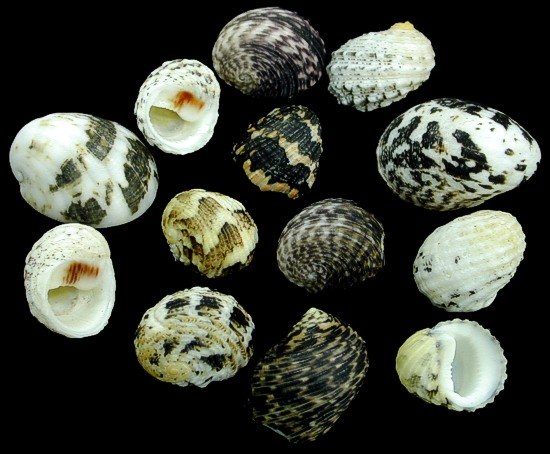
Mixed Nerite Shells
H1-11
One quarter pound of mixed Nerite species, measuring approximately 1/2 inch. ...... .49
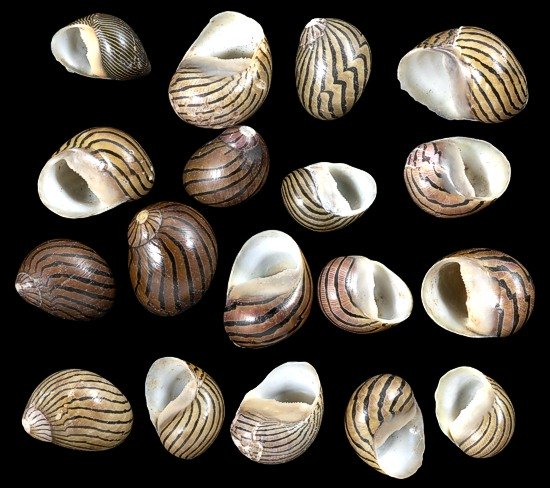
Mixed Nerita Columbella shells
AA1-10
One quarter pound of mixed Nerita Columbella shells, measuring 3/8 to 5/8 inch. ...... $1.10
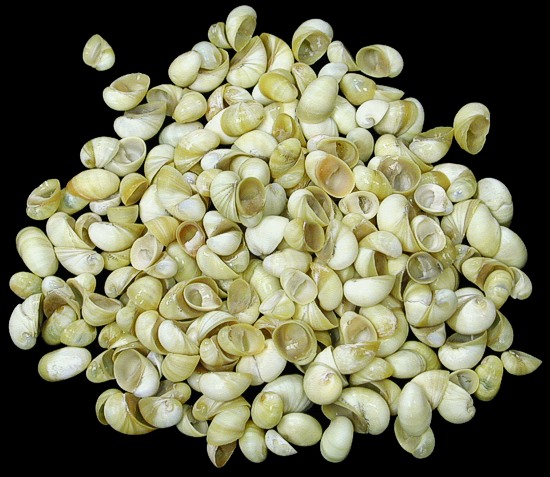
Rangiana Nerites
G0-8
One quarter pound of Rangiana Nerite shells, each less than 1/4 inch in size...... $1.35
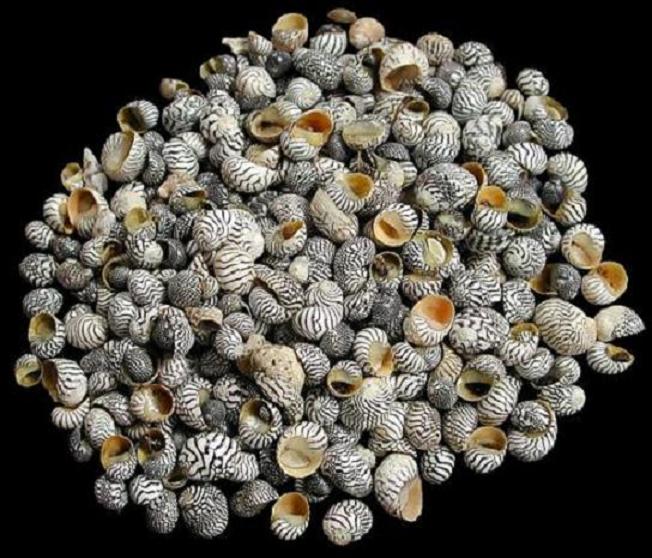
Zebra Nerites
ZN1-10
One Zebra Nerite shell, measuring less than 1/4 inch ....... .03
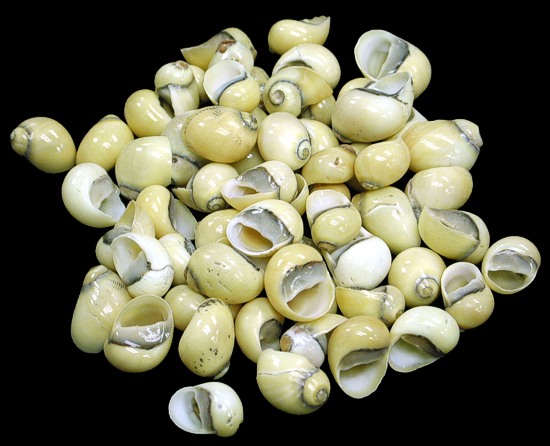
Yellow Nerites
DD2-10
One Yellow Nerite shell, measuring 2/8 to 6/8 inch....... .04
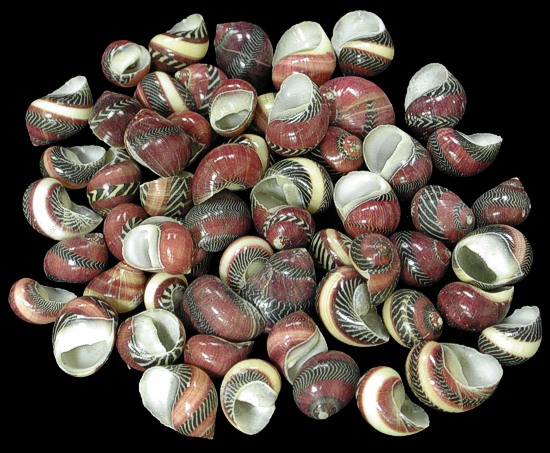
Red Nerites
RN-17
One Red Nerite Shell measuring 2/8 to .5 inch...... OUT OF STOCK
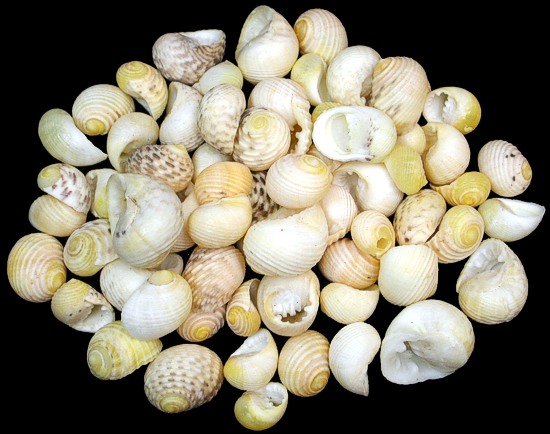
Nerita Plicata
Nerita plicata, a tropical sea snail species, belongs to the Neritidae family of marine gastropod mollusks, commonly known as nerites. It inhabits the Indo-West Pacific region
The Nerita plicata is characterized by its 1 inch shell height with its width being about the same. Their exterior is generally dull white or pink with ribs sometimes being black.
This species resides high in the intertidal zone, perched on rocks. N. plicata possesses ridges on its shell that assist in dissipating heat when exposed during low tide, helping it to stay cool.
The Nerita plicata engages in copulation between males and females for reproduction. Following mating, the females lay egg capsules, which will in time hatch into larvae.
Scientific classification
Domain: Eukaryota
Kingdom: Animalia
Phylum: Mollusca
Class: Gastropoda
Subclass: Neritimorpha
Order: Cycloneritida
Family: Neritidae
Genus: Nerita
Species: Nerita plicata
Binomial name: Nerita plicata
Linnaeus, 1758
(REF: "Nerita plicata". seashellsofnsw.org.au.)(REF: Linnaeus, C. 1758. Systema Naturae, 10th ed., vol. 1: 824 pp. Laurentii Salvii: Holmiae [Stockholm, Sweden)
YY2-10
One Nerita Plicata shell measuring 2/8 to 1/2 inch....... .04